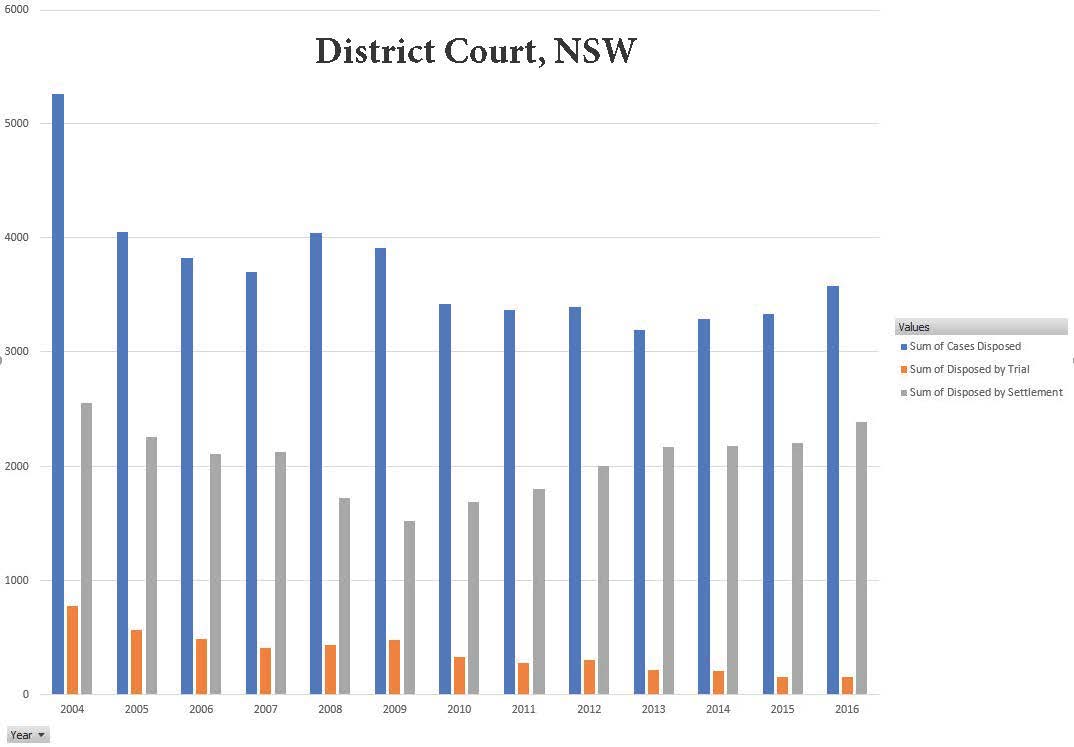In the run up to the end of the year I decided to do some reflecting on the state of the legal market for litigation. Some initial research led me to stumble onto the notion of the "Vanishing Trial" which was referred to by Justice Hayne in a paper published in 2008 (copy here). After reading the paper I thought some further digging was necessary to see what exactly the statistics say.
After collating some of the data published by the District Court of NSW and exercising my excel skills I prepared a chart that summarised the information in colour as follows: -

It is clear from this chart, barring any errors on my part, that the overwhelming trend is for fewer and fewer matters to be disposed of by trial. The bulk of the matters are settled and the remaining portion would account for matters that are withdrawn, struck out or otherwise disposed of.
Chances therefore are fairly good, at least statistically speaking that your matter will settle too. In my own practice I have theorised about this trend for sometime now and my take is that litigants are unlikely to pursue a fully contested hearing for at least some of the following reasons:-
- Costs are prohibitive or simply cannot be justified;
- Consumers of legal services are very reluctant participants when it comes to adversarial matters;
- Litigation settlement is more attractive.
This is of course not good news for those who make a living out of running trials (barring those who adjudicate).
If you have any views you would like to share please contact us.
* Disclaimer:- This publication contains general information which may not suit your particular needs or circumstances. It may be summarised and include generalisations. Details that may be important in your specific circumstances might not be included. Litigant strives to ensure that the information in this publication is accurate and up-to-date, but does not represent or guarantee that it is accurate, reliable, current, complete or suitable. You should independently evaluate and verify the accuracy, reliability, currency, completeness and suitability of the information, before you rely on it. The information in this publication is not legal or other professional advice. You should obtain independent legal or professional advice that is tailored to your particular circumstances if you have concerns. To the maximum extent permitted by law, Litigant excludes liability for any loss, however caused (including by negligence), relating to or arising directly or indirectly from using or relying on any content in this publication. Litigant asserts copyright over the content of this publication.
